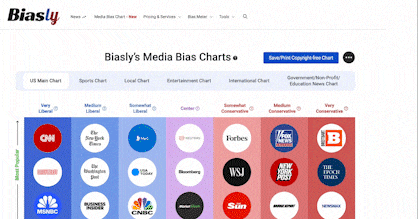
Let’s face it – we all have biases. They’re woven into the fabric of who we are, shaping our thoughts, opinions, and how we see the world around us. This human trait doesn’t magically disappear when someone becomes a journalist or media executive. These natural biases can significantly influence what stories make headlines and how they’re presented to us.
When we consume news, we’re not just reading facts – we’re seeing events through the lens of someone else’s perspective. This makes it crucial for us to understand how the personal viewpoints of journalists and media owners can color our daily news consumption and, ultimately, influence our own opinions.
In this article, we’ll explore real-world examples of how these media biases manifest and shape the information we receive.
Personal Biases of Journalists
Bias can originate from the personal biases of journalists. People who are unaware of how journalists’ biases affect the news may unknowingly adopt these biases. There are multiple ways in which journalists’ biases appear:
- Journalists may prioritize covering one side of an issue over another
- Journalists may prioritize covering certain topics over others
- Journalists’ diction can frame actions and policies as positive or negative
One way this can be seen is through their choices of which sides of issues to represent.
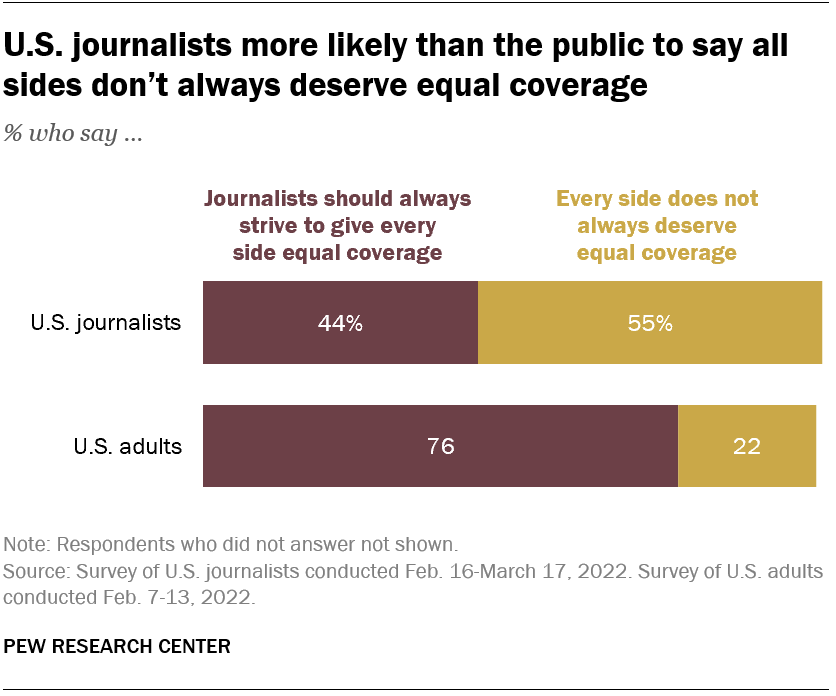
Source: Pew Research
In U.S. journalists differ from the public in their views of ‘bothsidesism’ in journalism, it is found that “A little more than half of the journalists surveyed (55%) say that every side does not always deserve equal coverage in the news.” Journalists may only feature one side of an issue in their reports. This results in a bias toward a certain side.
Similarly, journalists might show bias through the news topics they decide to address. In Journalists Need to Question How They Name, Frame Issues, former journalist Casey acknowledges how she and other journalists were biased for this reason:
“We consistently picked certain stories for page one and yet insisted we had no bias. We wrote stories about the deaths of prominent local white men, mostly, who were automatically considered newsworthy. We didn’t think about how or when people, women in particular, without titles or big jobs might deserve a lengthy obituary, too, even if they never ran for office…Often, we covered stories based not just on obvious news such as a house fire, but on conflict, which drove most of our stories. We covered a problem but not a solution…”
Journalists could focus more on stories about certain individuals, such as those who are more privileged, or those who hold more significant positions. By doing this, they display bias in favor of these people by treating them as more important to report on.
Finally, journalists can spread bias through their diction. According to Metropolitan Community College’s page Media Bias:
“The word choices a journalist makes…can manipulate the public’s reaction to a news story. Loaded or sensational words can elicit a positive or negative emotional response. Examples include choosing the word infanticide over abortion or anti-choice over pro-life, or using the word gloat to describe a politician’s response to a news story.”
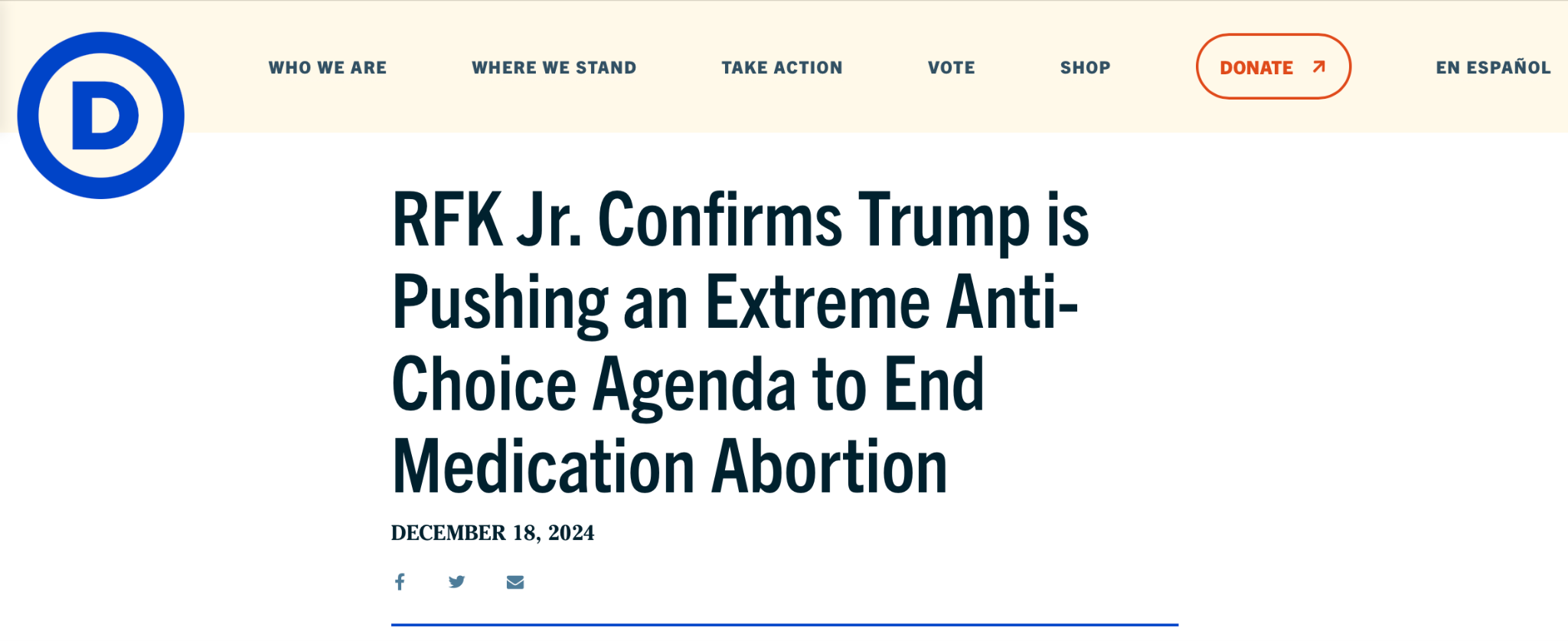
Source: Democratic National Committee
An instance of this is demonstrated in the article above. The phrase “anti-choice agenda” creates a negative portrayal of pro-life policies, and therefore prompts readers to oppose Trump’s abortion policies.
A journalist’s words can portray an action or policy positively or negatively, therefore expressing the journalist’s bias. In the example from Media Bias, the term “infanticide” creates a negative framing of abortion, and the term “anti-choice” creates a negative framing of the pro-life policy. As mentioned before, this spread of journalists’ biases can cause others to adopt them without realizing it. If people think that biased reporting is an objective truth, then they will internalize these biases.
Personal Biases of Media Owners
Another source of people’s biases are the biases of media owners. A media owner’s bias may be reflected in the articles of their news source. There are several ways in which a media owner’s bias can appear:
- A media owner’s source may be biased toward certain individuals
- A media owner can spread their bias by controlling the source’s editorial policy
- A media owner’s source may appeal to certain people’s biases
For instance, a media owner’s bias can appear because the owner controls the source’s editorial policy or the rules that journalists must follow while reporting. Asyari explains this in Media Ownership, Bias, and Intervention:
“…private interests, be it political or economic, have always enabled media owners…to intervene in editorial policy…journalist respondents openly acknowledged that they conformed to both ‘subtle’ and ‘direct’ pressures from their managers, who in turn took orders from the media owners (Mano 2005, p.57)…Chomsky (2006) asserts that the then paper’s proprietor, Arthur Hays Sulzberger, routinely wrote memos (415 memos between 1956 and 1962) to his long serving editor, Turner Catledge, to instruct and order stories.”
The fingerprints of media ownership are everywhere in today’s news landscape. Think about it: those at the top of media organizations wield considerable power over what stories make it to your screen or morning paper. It’s not just about which stories get the green light – it’s about how they’re framed and presented. Media owners often ensure that their outlets’ coverage aligns with their own worldview, whether subtly or overtly. This means the news you consume might be filtered through the personal beliefs and business interests of people you’ve never met.
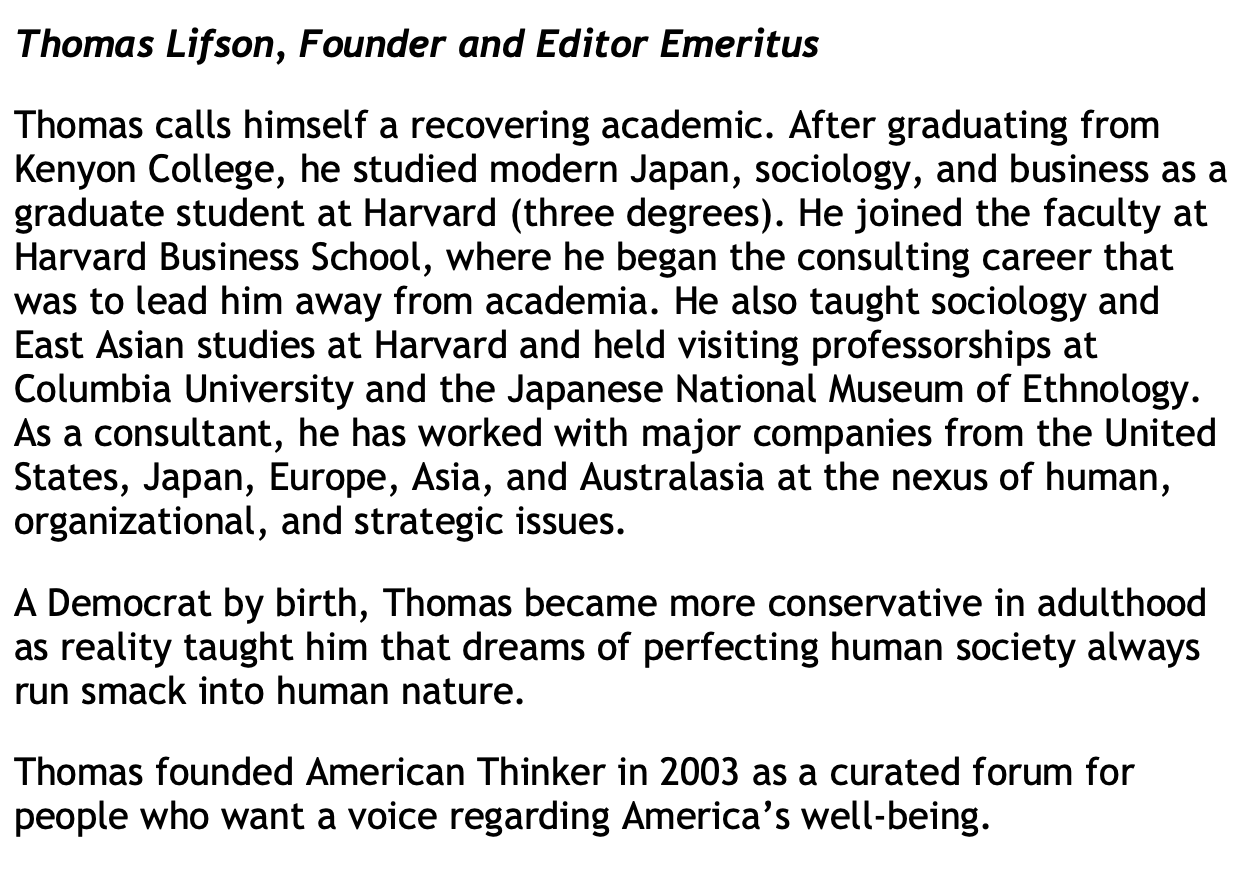
Source: American Thinker
For example, Lifson, the founder and editor of American Thinker, is confirmed to be “conservative”. It can be inferred that this has caused American Thinker to hold a conservative bias. After all, it is known that American Thinker has published many conservative pieces, such as the following:
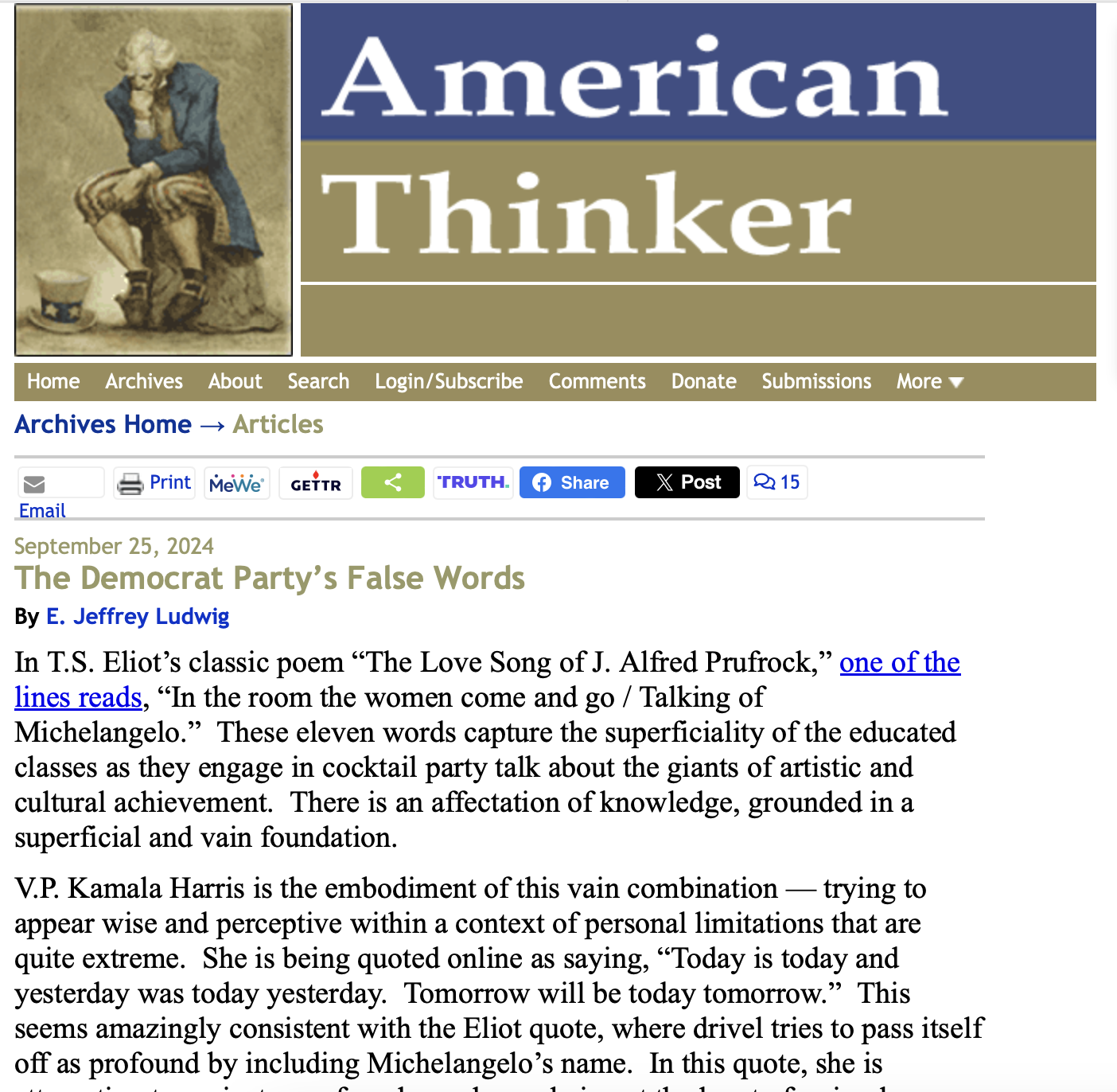
Source: American Thinker
This article displays a conservative bias through its negative portrayal of Democrats. The title refers to Democrats as “false”. Then, a specific Democrat, Harris, is described as “vain”. This proves that American Thinker has a conservative bias, partly caused by its conservative founder.
A media owner might also cause an outlet to be biased toward certain individuals. One occurrence of this is described in Archer and Clinton’s Changing Owners, Changing Content: Does Who Owns the News Matter for the News?:
“…the New York Observer – owned by Donald Trump’s son-in-law Jared Kushner – endorsed Trump in the Republican primary despite initial pledges that it would not cover him. In fact, some argued that the New York Observer ‘did not hesitate to advance [Trump’s] agenda’ and pointed out that the Observer ran ‘a lengthy takedown’ of Trump’s one-time opponent, Marco Rubio.”
The New York Observer has a history of supporting Trump in its coverage, which aligns with Kushner’s bias in favor of Trump as his son-in-law.
A third way a media owner might express bias is by appealing to the biases of a certain group. This can be seen when an outlet’s articles cater to a certain group since, as already described, the owner has a say in what the outlet publishes.
As Roscini explains in How The American Media Landscape is Polarizing the Country:
“Cable news is a business that runs on ratings and advertisements and, in order to capture people’s attention, it needs to be engaging. It has, therefore, increasingly blurred the lines between information and entertainment…MSNBC has ‘pumped up its ratings by recasting itself as a left-leaning riposte to Fox News.’”
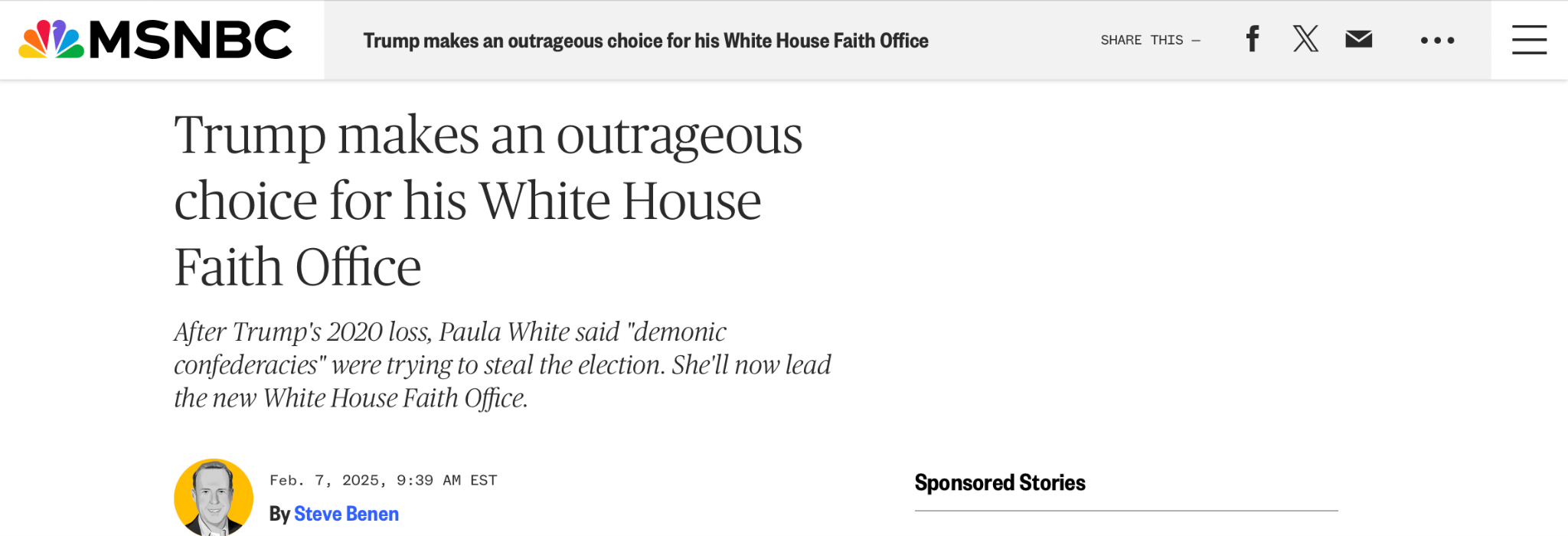
Source: MSNBC

Source: Time
Another example can be seen in the screenshot above. The article from Time uses negative words to describe Trump’s actions: “chaos, confusion, and heartbreak”. In this way, the article appeals to people’s biases against Trump.
It’s all about following the money. Media owners often play to specific audiences, knowing exactly which stories will resonate with their target demographic. Take a liberal-leaning outlet, for example – they might deliberately pump out content that appeals to progressive readers, knowing it’ll boost their viewer numbers and, ultimately, their bottom line. This isn’t just savvy business; it’s a calculated strategy where profit often trumps impartial reporting.
The uncomfortable truth? Many media organizations are more focused on keeping their audience happy (and growing) than delivering completely balanced news coverage. It’s less about telling the whole story and more about telling the version their audience wants to hear.
It should also be noted that appealing to a certain audience strengthens the audience’s biases. Roscini explains:
“Polarization is further exacerbated by echo chambers, spaces where ‘the reinforcing effect of media and beliefs drive people to wall themselves off from a wider range of media.’[17] Having many news options available means that consumers can choose to hear messages that reinforce their beliefs while avoiding those from alternative points of view. For example, Fox News and MSNBC ‘only tell us how right we are, and that’s making us more extreme.’[18] The more media people see that encourages them to think of themselves as part of a group, the deeper their identity roots become engrained, and the more resistant they are to change their views.”
In today’s digital age, it’s easier than ever to live in an echo chamber. With countless news outlets catering to every imaginable viewpoint, we can easily surround ourselves with content that perfectly mirrors our existing beliefs. This comfortable bubble of agreement feels good, but it comes at a cost. When we only consume news that validates our current views, we risk becoming more entrenched in our positions and less open to understanding different perspectives.
The reality is that bias is part of the human condition – none of us can claim complete objectivity. That’s why it’s crucial to recognize and understand the biases we encounter daily, especially from those who shape our news consumption. Here’s how bias typically shows up in our media:
- Journalists might present just one side of a complex issue
- Stories can be cherry-picked to support a particular narrative
- Events are often framed to align with specific viewpoints
- Language choices can subtly influence reader perception
- Source selection might favor certain perspectives over others
The danger lies in passive consumption. When we fail to recognize these built-in biases, we risk absorbing them unconsciously or allowing them to reinforce our existing prejudices. That’s why media literacy is more important than ever. By staying aware of how these biases manifest in our daily news intake and understanding their potential influence on our thinking, we can make more informed choices about the media we consume and maintain a more balanced worldview.






















